
An illustration of an early printer’s workshop.
On through October 29 in the Rocca Abbaziale, the citadel of Subiaco, a hill town some 31 miles east of Rome, is the exhibition “Subiaco 1465/2015.” It commemorates the 550th anniversary of the first four books printed in Italy. Their typographers were Arnold Pannartz (?-1476), a Czech from Prague or possibly a German from Cologne, and Conrad Sweynheim (?-1477), a German from Eltville, the birthplace of Gutenberg’s mother near Mainz. Both lay brothers, they were possibly disciples of Gutenberg, but more likely of his creditor, the moneylender Johann Fust, and of scribe Peter Schoeffer.
Fust had taken control over Gutenberg’s press in Mainz when the printer couldn’t pay back Fust’s loan of 800 guilders. Schoeffer was Fust’s son-in-law; he’d dabbled in the new invention of printing with moveable type and had helped to design Gutenberg’s typeface. In 1457 he and Fust had printed the Mainz Psalter, which is the second oldest book printed with moveable type in Europe and can be dated with certainty. Gutenberg had printed his 42-line Bible two years earlier.
It isn’t clear why Pannartz and Sweynheim came to the Benedictine Monastery of St. Scholastica just outside Subiaco. It seems to be a combination of reasons: 1) as refugees from the considerable political unrest and war in Mainz; 2) many German typographers were going abroad to earn their living by practicing this new trade; 3) the majority of monks at Santa Scholastica were German or from German-speaking northern European countries; 4) Santa Scholastica had an extensive library with texts to print as well as a scriptorium, and 5) the typographers were invited there by two great humanists, the prolific writer Spanish Dominican Cardinal Juan de Turrecremata (1388-1468), appointed Abbot of Subiaco in commendam by Pope Callixtus III in 1456 and uncle of the Inquisitor Tomás, and/or by German-born Cardinal Nicholas of Cusa (1401-1464), philosopher, theologian, jurist, and astronomer.

A model of an early printing press
Pannartz and Sweynheim arrived in Subiaco in 1464, the year Nicholas of Cusa died; they moved to Rome in 1467. Although they introduced movable type to Subiaco, according to www.graphicdesign.com’s article about them and other early printers in Rome, several German typographers: Ulrich Han, his brother Wolf Han, his nephew Heinrich Han, Georg Lauer, Leonhard Pflugl, and Stephan Plannck, arrived in Rome earlier or at the same time.
During their three years in Subiaco, Pannartz and Sweynheim taught the monks how to make movable type, set up their press and printed four books: Donatus pro puerulis, a Q&A Latin grammar book for children of which no copies survive; Cicero’s De Oratore, undated but certainly printed before September 30, 1465; an anthology of the works of Church Father Lactantius, dated October 29th, 1465, which is considered the birthdate of printing in Italy; and St. Augustine’s De Civitate Dei, completed on June 12th, 1467. They printed 275 copies of each text. Eighteen copies of Cicero survive, three of which are in Italy, in Rome’s oldest public library the Biblioteca Angelica, Ravenna’s Public Library, and the Laurentian Library in Florence. Of Lactantius, nicknamed the “Christian Cicero,” some 40 copies survive, of which 14 are in Italian libraries. One is in St. Scholastica’s library, as are two copies of St. Augustine (there are another nine in Italy).
The surviving texts of these four volumes are of particular importance because in Subiaco Pannartz and Sweynheim abandoned the Blackletter of the early German books, and used what’s called a “half Roman” typeface with Blackletter-like characteristics, but more rounded and less “spiky.” It was modeled on formal Italian handwriting known as humanist script, in particular that of a 13th-century manuscript of Origen’s Homilies, which the printers had access to in St. Scholastica’s scriptorium. Its capital letters are like those of Imperial Roman inscriptions; its small letters Gothic.
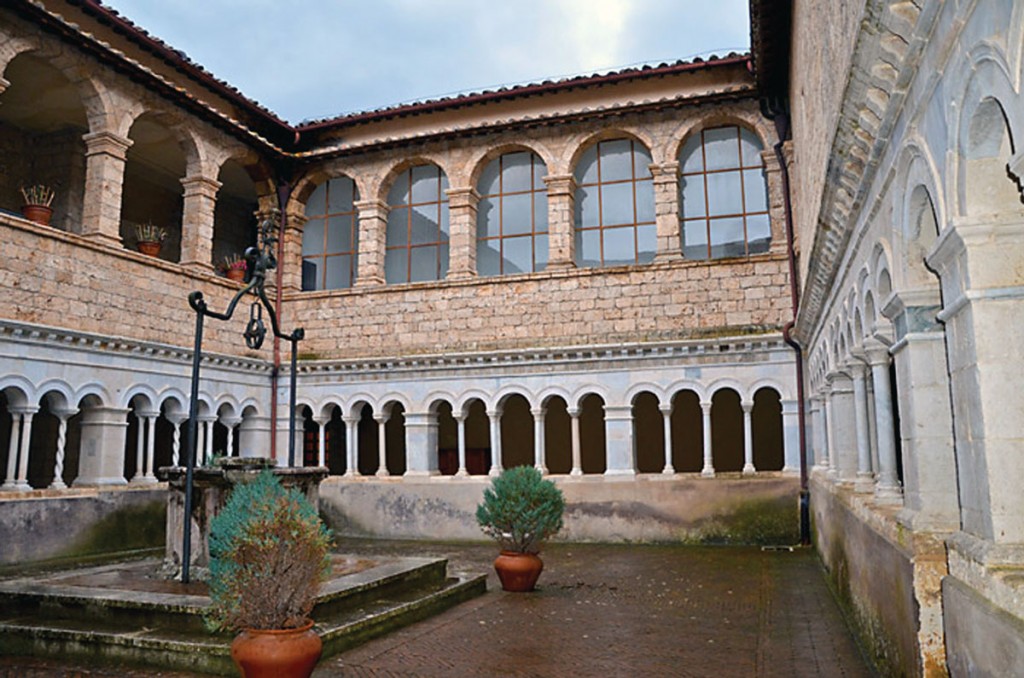
The cloister of St. Scholastica.
In 1467, the two printers left Subiaco and settled in Rome, almost certainly for financial reasons—in Rome they would be close to the Vatican and have greater exposure. The brothers Pietro and Francesco Massimo, the papal suppliers of parchment and paper, placed a house at their disposal. The large Renaissance Palazzo Massimo with its rounded façade still exists on Corso Vittorio Emanuele near Campo dei Fiori. This market square since the Middle Ages was already home to numerous hotels for pilgrims and dignitaries visiting the Vatican, which is not far away, just across the Tiber. The Palazzo still houses the Massimo family archives. On its back wall, located on Via Mercatoria, is a plaque commemorating the workshop of Pannartz and Sweynheim. That same year they printed Cicero’s Letters to his Family in yet again a more rounded typeface that gave its name to the typeface Cicero which is similar to Pica. This typeface is based on the beautiful handwriting of Tuscan humanist and personal secretary to several Popes, Poggio Bracciolini.
According to two inventories they printed in 1470 and 1472, up to then Pannartz and Sweynheim had published 28 theological and classical texts: the Bible, Lactantius, Cyprian, St. Augustine, St. Jerome, Leo the Great, Thomas Aquinas, Cicero, Apuleius, Caesar, Gellius, Lucan, Virgil, Livy, Strabo, Pliny, Quintilian, Suetonius, and Ovid to name a selection, in editions varying from 275 to 300 copies each, for a total of some 12,475 volumes.
Although prolific, they shared the fate of their perhaps mentor Gutenberg. They could not sell their books. According to the website www.historygraphicdesign.com, “in 1472 they sent their assistant, Bernhard von Merdingen, with a shipment of books to sell at the Nuremberg fair. In that same year, encouraged by their editor, Johannes Andreas de Bussi, librarian at the Vatican, they addressed an unsuccessful suppliant letter to Pope Paul II.” Instead according to a wall panel in the Subiaco exhibition their letter was written on March 20, 1472 to Pope Sixtus IV, the founder of the Vatican Library, in the Preface of the 5th book of a theological text they’d recently printed. The text was Postillae perpetuae in universam S. Scripturam, the first printed commentary of the Bible, by Jewish-born Franciscan teacher and head of the Franciscan Order in France, Nicholas of Lyra (1270-1349). Thus their letter couldn’t have been for Pope Paul II, who’d died in 1471.

Subiaco’s Rocca Abbaziale
In contrast, although in 1473 Sweynheim dissolved their partnership, Wikipedia gives a more optimistic report: “The pope had a reversion drawn up for them, a proof of his great interest in printing. In 1474 Sweynheim was made canon at St. Victor at Mainz. It is not known whether Pannartz also obtained benefice.” Perhaps the Pope also aided them professionally because in 1472 and 1473, they printed 18 more titles. After their separation Pannartz printed thirteen more titles, including Sallust, Seneca, and Statius, Niccolò Perotti’s Rudimenta grammatices and Lorenzo Valla’s De Elegantiis linguae latinae, by himself. The press remained active until 1479 when another German printer in Rome, Georg Lauer, finished Pannartz’s last endeavor, the second volume of St. Jerome’s Letters. Instead, Sweynheim returned to his original profession as an engraver. He executed fine maps for the Cosmography of Ptolemy, the first work of this kind, but died before he had finished the project.
“Subiaco 1465/2015” is divided into four sections: a time chart of Pannartz’ and Sweynheim’s career and another of the spread of printing in Europe before 1500; photographic reproductions of the different types of manuscripts produced in St. Scholastica’s scriptorium before the printed book: musical, liturgical, literary, and illustrated; photographic reproductions of a page from each text Pannartz and Sweynheim printed at St. Scholastica; and reproductions of the entire texts of Cicero and Lactantius, as well as a time chart of the history of printing, and models of Subiaco moveable type and the first press. The Rocca is home to a small didactic Museum of Printing and Paper.

The facade of Rome’s Palazzo Massimo

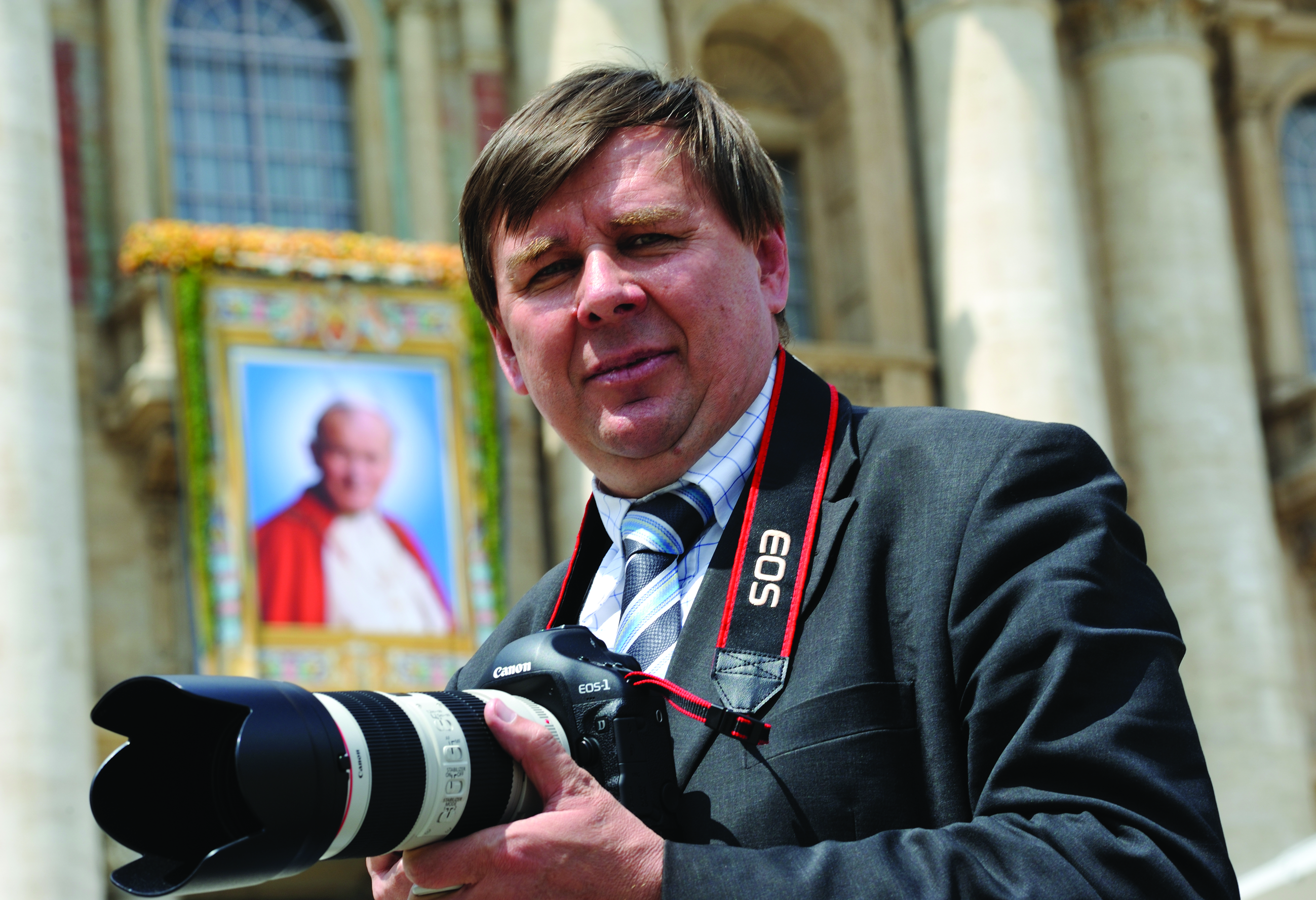
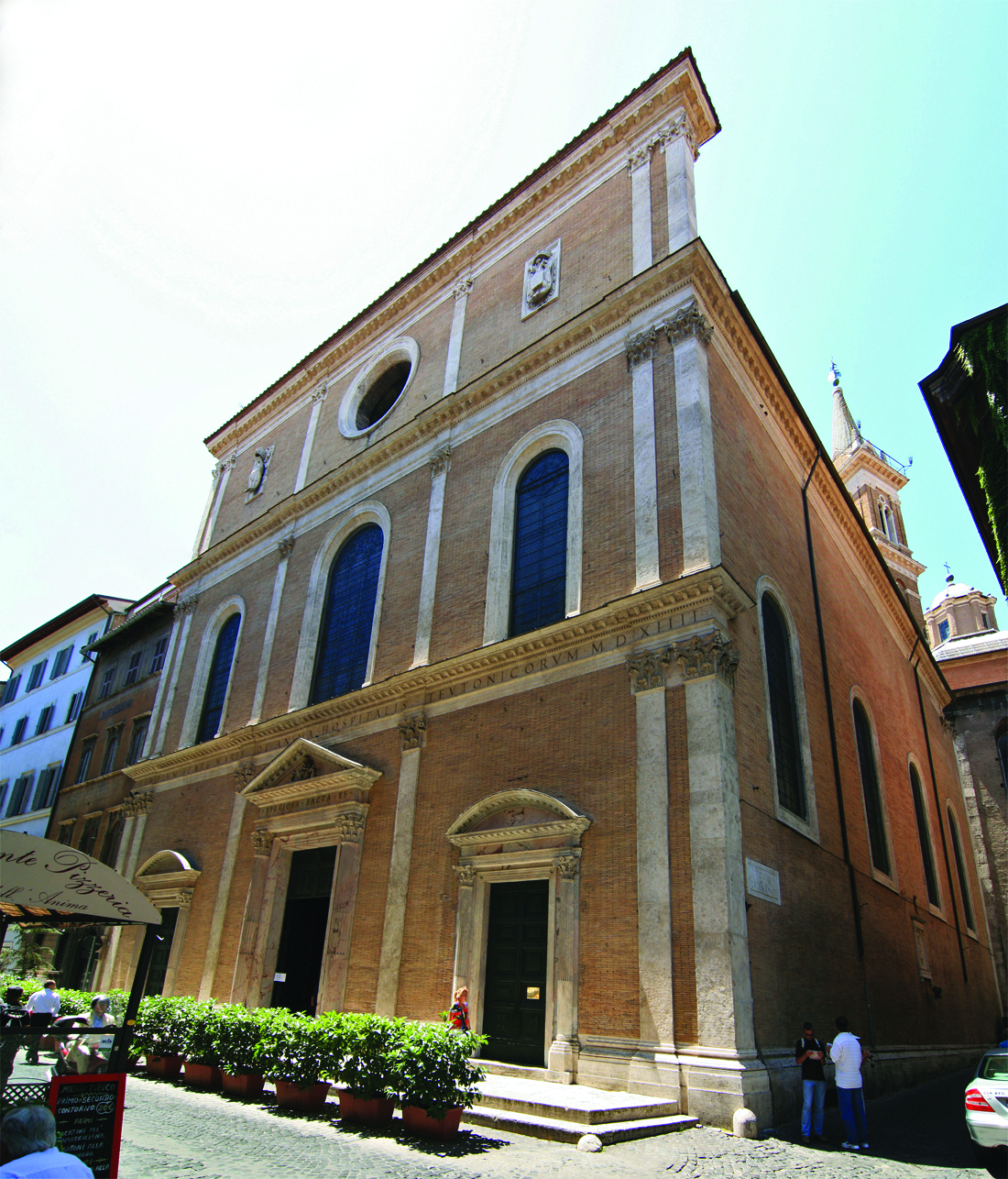
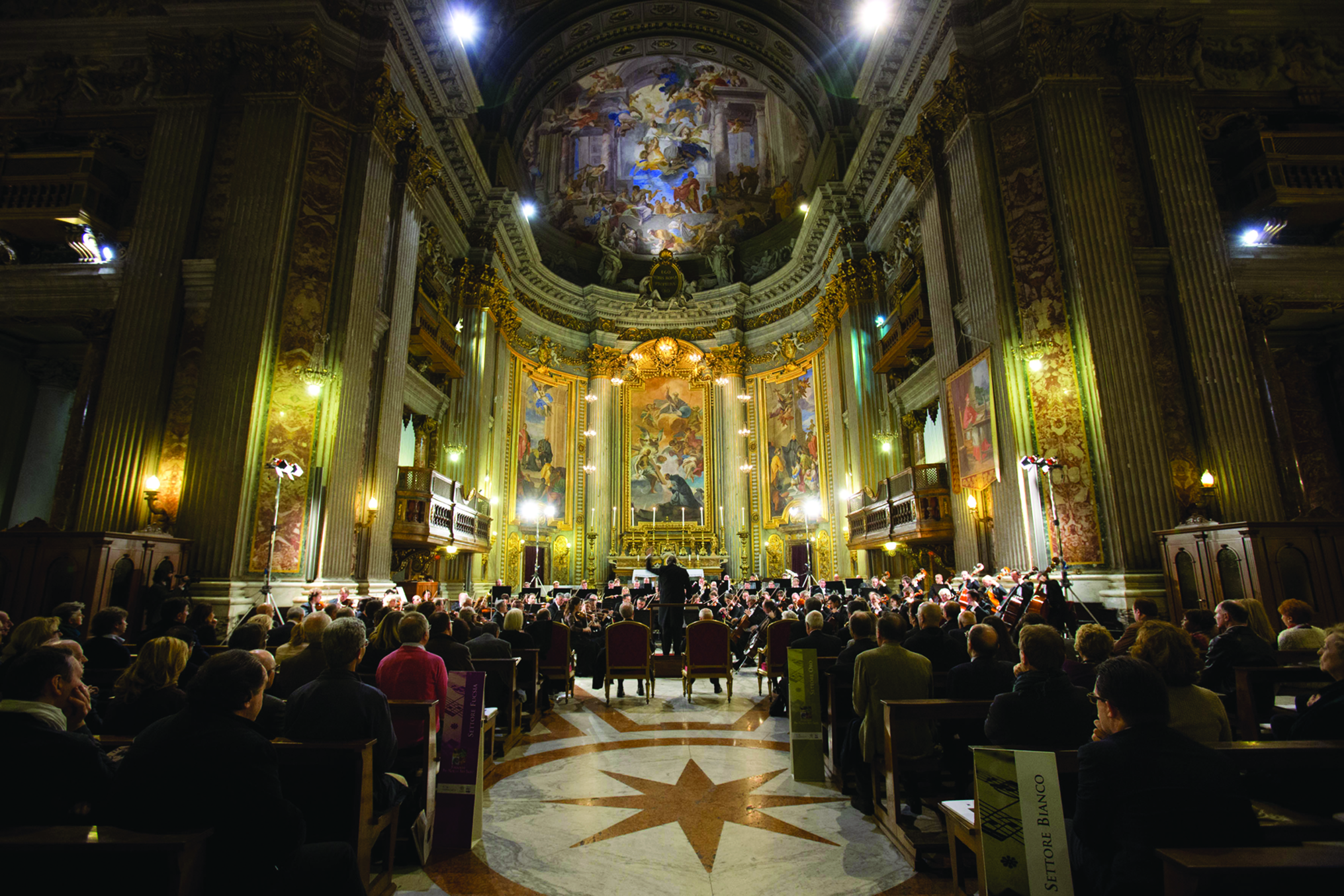
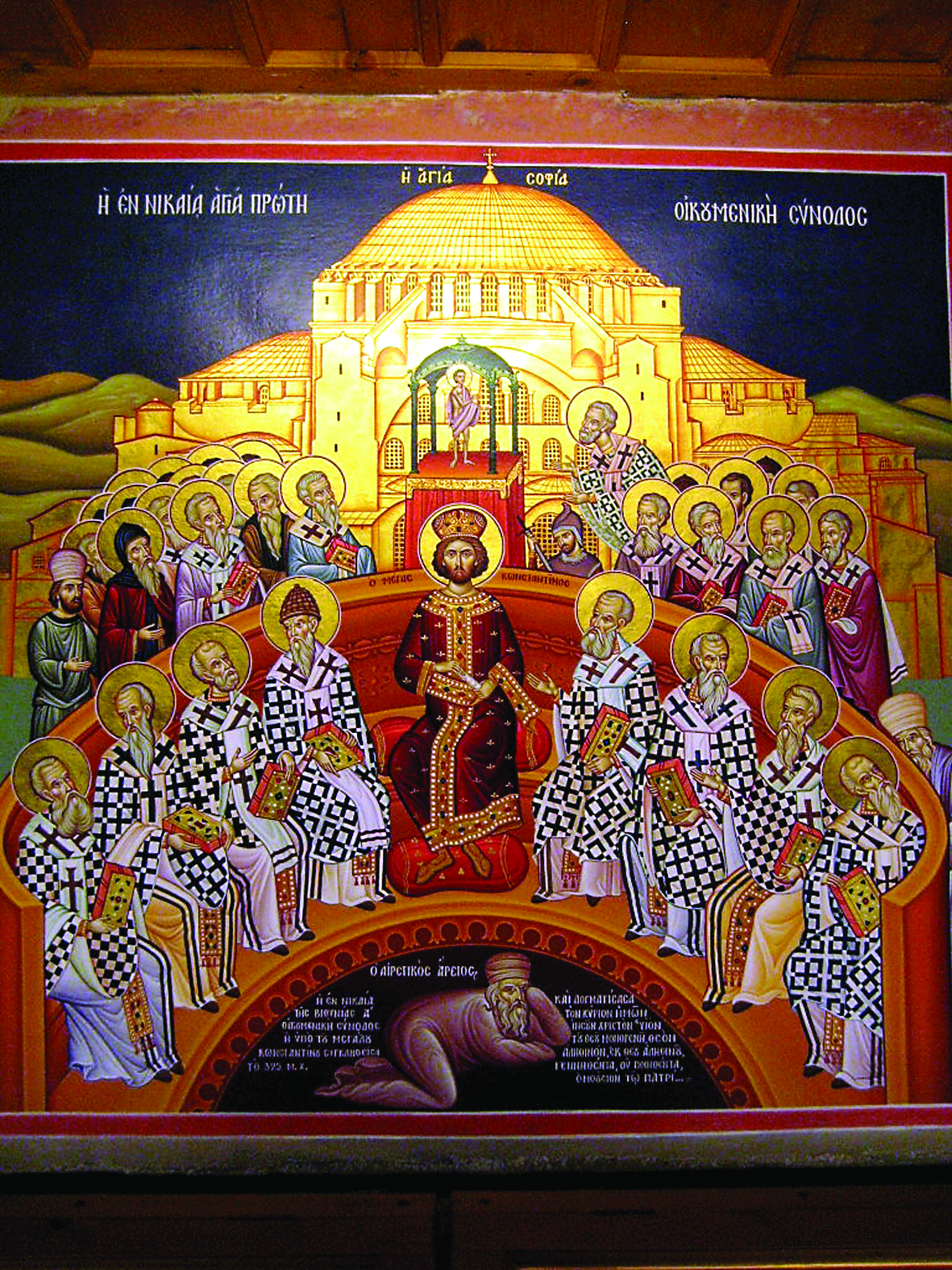
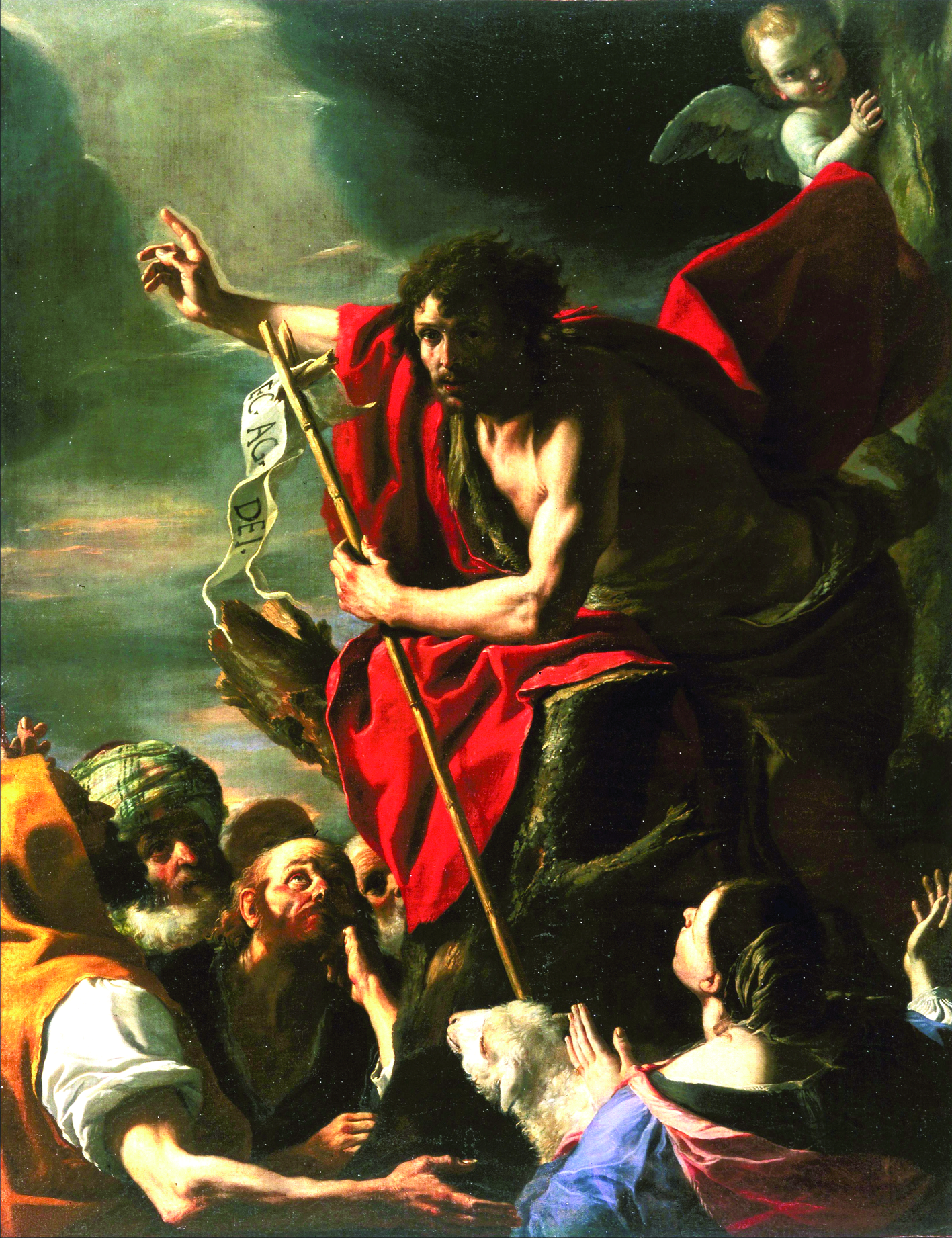
Facebook Comments